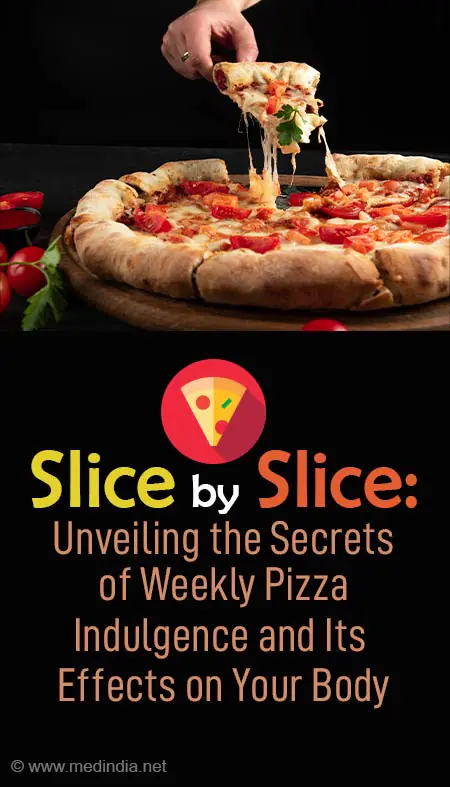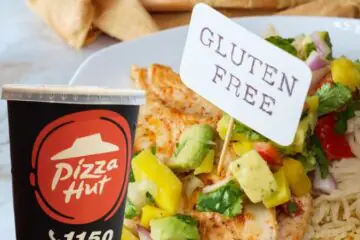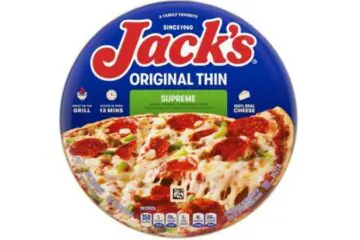A slice of pizza typically contains about 18 mg of cholesterol. This amount can vary based on the toppings and type of pizza.
Exploring the nutritional aspects of pizza, one cannot overlook its cholesterol content—an important consideration for those monitoring their heart health. The cholesterol in pizza comes mainly from cheese and meat toppings, which are also sources of saturated fat.
While the appeal of a warm, cheesy slice is universal, understanding its health implications helps consumers make informed dietary choices. Those seeking healthier options might opt for pizzas with vegetable toppings, less cheese, or a whole-grain crust to enjoy this beloved dish while keeping an eye on cholesterol intake. Pizza lovers should remember the importance of portion control and balance with other nutrient-rich foods in their diet.
The Cholesterol Content In Pizza
Pizza, a global favourite, often comes under scrutiny for its health impacts. One such concern is cholesterol. With a range of toppings available, cholesterol levels in pizza can vary greatly. Let’s dive into what makes up a slice of pizza and how it might affect your cholesterol.
Breaking Down The Nutritional Profile
A typical slice of pizza consists of crust, sauce, cheese, and various toppings. It offers a mix of carbs, protein, and fat. Cheese and meat toppings contribute to the cholesterol content. To understand how pizza affects cholesterol levels, one must look closely at its ingredients.
Cholesterol Counts In Common Pizza Toppings
Each topping has a different cholesterol impact:
- Cheese: High in cholesterol, adds creamy texture and flavour.
- Pepperoni: Popular topping with significant cholesterol.
- Sausage: Another meat high in cholesterol.
- Vegetables: Ideal for a healthier option with minimal cholesterol.
For those monitoring cholesterol, considering the type of cheese and meat is critical. Opting for vegetable toppings or reduced-fat cheese can make pizza a more heart-friendly choice. Next, let’s look at specific cholesterol counts.
| Topping | Cholesterol (mg per Slice) |
| Cheese | 22 |
| Pepperoni | 14 |
| Sausage | 19 |
| Vegetables | 0 |
These values vary by brand and type, but they offer a basic guide. Remember, a balanced diet with healthy cholesterol levels is important. Select your pizza toppings with this in mind.
Ingredients And Their Impact
When biting into a delicious slice of pizza, most people think about the flavours. Few ponder the ingredients and their effect on health. Yet, what goes into a pizza can impact cholesterol levels. Understanding these ingredients is critical to managing dietary choices.
Cheese: A Culprit For Cholesterol?
Cheese is pizza’s best friend, but it might not be the best for your heart. It is a significant source of cholesterol. Here’s what to know:
- High-fat cheeses have more cholesterol.
- Opt for low-fat or reduced-fat versions to cut down intake.
- Vegan cheese is a cholesterol-free alternative.
Meat Toppings And Cholesterol Levels
Meats add flavour but also cholesterol. Processed meats are incredibly high:
| Meat Topping | Cholesterol Content |
| Pepperoni | High |
| Sausage | High |
| Ham | Moderate |
Choose leaner meats like chicken or skip meat altogether for a healthier slice.
Crust Considerations: Whole Grain Vs. Refined
Not all pizza crusts are equal. The type of flour used can influence cholesterol:
- Whole grain crusts are rich in fibre, which can help lower cholesterol.
- Refined crusts offer less nutritional value and don’t aid in cholesterol management.
Going for a whole grain option means you’re not just choosing flavour but also a heart-healthy alternative.
Comparative Analysis
When you reach for a slice of pizza, you might wonder about its cholesterol content. Let’s dive into a comparative analysis to give you a clearer picture of what you’re eating.
Pizza Vs. Other Fast Foods
Pizza often finds itself on the menu alongside other fast food favourites. But how does pizza compare in terms of cholesterol? Take a look at this simple breakdown:
| Fast Food Item | Cholesterol (mg) per Serving |
| Cheese Pizza (1 slice) | Approx. 18 mg |
| Bacon Cheeseburger | Approx. 90 mg |
| Fried Chicken (1 piece) | Approx. 75 mg |
| French Fries (medium) | Approx. 0 mg |
Your Slice stacks up better than most options, especially when craving something indulgent.
Store-bought Vs. Homemade: Cholesterol Differences
Choosing between store-bought and homemade pizza can impact your cholesterol intake significantly.
- Store-Bought Pizza: Often loaded with cheese and processed meats, leading to higher cholesterol.
- Homemade Pizza: It lets you control the ingredients, like using part-skim cheese or more veggies for lower cholesterol.
Consider this:
| Type of Pizza | Cholesterol (mg) per Slice |
| Store-Bought (Pepperoni) | Approx. 28 mg |
| Homemade (Veggie) | Approx. 10 mg |
Creating a pizza in your kitchen could be a heart-healthier option, especially if you’re conscious of the toppings you choose.
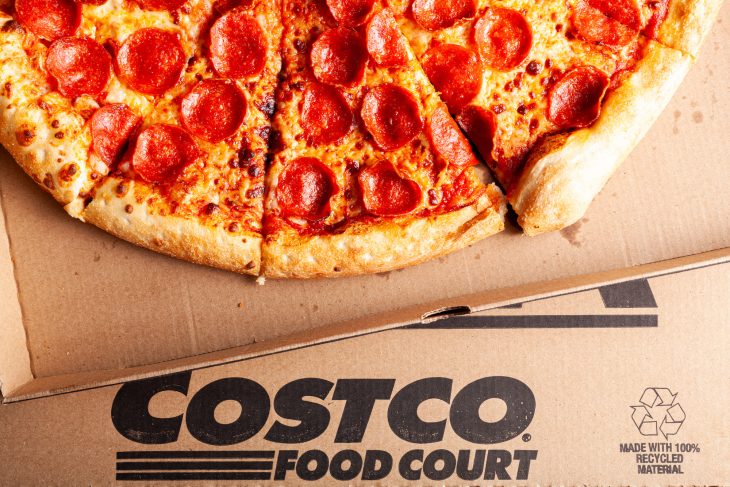
Credit: facts.net
Dietary Guidelines
Understanding the cholesterol content in food is pivotal to following healthy eating practices. Pizza is an iconic and popular dish worldwide, so it’s essential to consider its cholesterol content within the framework of dietary guidelines.
Recommended Cholesterol Intake
The American Heart Association advises that most adults should consume no more than 300 milligrams of cholesterol per day. This number can be lower for individuals with heart conditions or high cholesterol.
How Pizza Fits Into A Balanced Diet
Pizza can be part of a balanced diet if consumed in moderation. Choices like vegetable toppings and thin crust can make it a healthier option.
Let’s break down the cholesterol in pizza:
- A typical slice of cheese pizza has about 18-22 milligrams of cholesterol.
- Meat toppings increase cholesterol content.
- Opting for whole grain crust adds fibre and nutrients.
To maintain a balanced diet, include:
- Fresh fruits and vegetables are good for vitamins and fibre.
- Lean proteins for muscle repair and growth.
- Whole grains for energy and digestion.
Remember, moderation is key:
| Pizza Type | Cholesterol (mg) | Slice Count Per Day |
| Cheese Pizza | 18-22 | 1-2 |
| Meat Pizza | 25-30 | 1 |
Health Implications
Understanding the health implications of cholesterol in pizza is vital. A slice may seem harmless. It’s essential to know how it contributes to your daily cholesterol intake and overall health.
Risks Of High Cholesterol
Cholesterol can sneak into your diet through tasty treats like pizza. Too much cholesterol leads to health issues. It’s essential to stay aware of the risks associated with high cholesterol. These include:
- Heart disease risk increases with higher cholesterol levels.
- Cholesterol can build up in arteries, causing blockages.
- Stroke probability may rise due to reduced blood flow to the brain.
How Pizza Consumption Affects Your Health
Eating pizza regularly may impact your health over time. A typical slice of pizza contains cholesterol, along with other elements like:
| Component | Amount in a Slice |
| Cholesterol | Approx. 20-30 mg |
| Saturated Fat | Up to 5 g |
| Sodium | 500-700 mg |
An increased intake of cholesterol and saturated fats raises cholesterol levels in the blood. This affects heart health. Excessive sodium intake leads to high blood pressure. Enjoy pizza in moderation with a healthy lifestyle to maintain balance.
Mitigating Cholesterol Intake
Love for pizza is almost universal, but for those monitoring their cholesterol levels, indulging in this cheesy delight can pose some risks. Yet, it doesn’t have to be a heart-health hazard if you make intelligent choices. Discover how to savour your Slice while keeping cholesterol in check.
Healthier Pizza Choices
Opting for healthier pizza options can make a significant impact on cholesterol intake. Let’s explore some choices:
- Veggie toppings – Load your pizza with vegetables instead of high-cholesterol meats.
- Whole wheat crust – It’s richer in fibre than white flour crusts.
- Less cheese – Ask for reduced cheese or opt for lighter varieties like mozzarella.
Tips For Reducing Cholesterol When Eating Pizza
Making minor adjustments to your pizza can lead to big wins for your heart health. Try these tips:
- Go for a thin crust – Less dough means less room for cholesterol.
- Skip the extra cheese – Cheese adds flavour but also cholesterol.
- Select lean meats – Consider chicken over pepperoni or sausage.
- Add a side salad – A great way to fill up fibre and nutrients.
Understanding Labels
When you grab a slice of pizza, you might not think about its cholesterol content. But, for those watching their heart health, this is vital information. Nutrition labels can be confusing. Let’s simplify how to read them. We will focus on cholesterol in pizza and how to spot it on labels.
Decoding Nutrition Facts On Pizza Packaging
Start with the Nutrition Facts panel found on pizza packaging. Here’s how to interpret it:
- Look for ‘Cholesterol’: It’s measured in milligrams (mg).
- Assess ‘Serving Size’: Determine how many servings are in one pizza.
- Calculate Your Intake: Multiply the cholesterol per serving by how many slices you eat.
Pizza packaging varies, so always double-check the label.
Spotting Hidden Cholesterol In Ingredients
Cholesterol hides in plain sight within certain ingredients:
- Cheese: High in cholesterol. Check the type and amount.
- Meat toppings: Processed meats like pepperoni are cholesterol sources.
- Crust: Made with butter or lard, it can add cholesterol.
Opt for vegetable toppings and lean meat choices to reduce cholesterol intake.
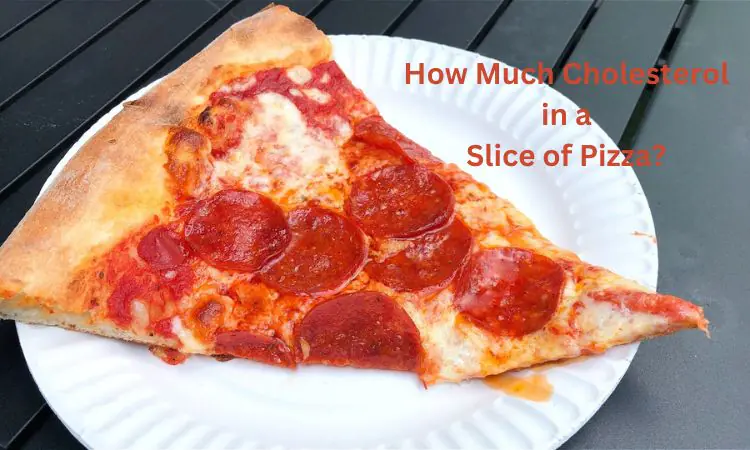
The Way Forward
Understanding how much cholesterol is in a slice of pizza is just the start. Changing eating habits and pizza recipes will lead to a healthier heart. Let’s dive into the latest trends in pizza. Healthier options await!
Embracing Health-conscious Pizza Recipes
Tasty pizza, is that also good for you? Yes, please! Here’s how to make it happen:
- Whole Wheat Dough: It’s full of fibre and better for you.
- Low-Fat Cheese: Enjoy pizza without the cholesterol scare.
- Fresh Veggies: They add colour, flavour, and vitamins.
- Lean Proteins: Think chicken or turkey over pepperoni.
- Homemade Sauce: Skip the sugar and salt, and go natural.
Try these swaps next time you bake a pizza. Your heart will thank you!
The Future Of Pizza: Can It Become Healthier?
Imagine pizza being a healthy food. That future is pretty close. New techniques are already here:
| Ingredient | Healthy Swap |
| Flour | Almond or oat flour |
| Toppings | Plant-based options |
| Meats | Nitrate-free and lean cuts |
| Cheese | Reduced fat or vegan cheese |
New pizza shops are innovating with these ingredients. Soon, enjoying pizza could mean boosting your health.

Credit: mycozyfarm.com
Frequently Asked Questions Of How Much Cholesterol In A Slice Of Pizza
Is Pizza High In Cholesterol?
No, the pizza itself isn’t exceptionally high in cholesterol. However, toppings like cheese and pepperoni can add cholesterol to the meal. On average, a slice of cheese pizza contains about 18 mg of cholesterol, but this can vary with different toppings and pizza types.
How Does Pepperoni Pizza Cholesterol Compare?
Pepperoni pizza typically has more cholesterol than cheese pizza due to the added meat. A slice can contain up to 28 mg of cholesterol, but the exact amount depends on the amount and type of pepperoni used and the pizza’s size.
Can Pizza Affect My Daily Cholesterol Intake?
Yes, pizza can contribute to your daily cholesterol intake, especially if consumed in large amounts or with high-cholesterol toppings. It’s important to moderate pizza consumption and choose veggie toppings if you’re watching your cholesterol levels.
What Is A Healthier Pizza Option For Low Cholesterol?
For a lower-cholesterol pizza option, consider opting for a thin crust, vegetable toppings, and less cheese. Also, choosing part-skim mozzarella or vegan cheese can reduce cholesterol intake while still enjoying pizza.
Conclusion
Analyzing the cholesterol content in pizza enlightens us on dietary impacts. Remember, slices vary in cholesterol based on toppings and crust. The key takeaway is to enjoy pizza mindfully, keeping an eye on heart health. For a healthier slice, opt for veggie toppings and thinner crusts.
Balance is the Slice of life—and pizza!

As the author of the “Ultimate Pizza Guide: Recipes, Tips & Secrets Revealed,” I’m dedicated to sharing my love for pizza and empowering others to create delicious homemade pizzas with ease. Join me on a journey to uncover the secrets to perfecting your pizza game!
